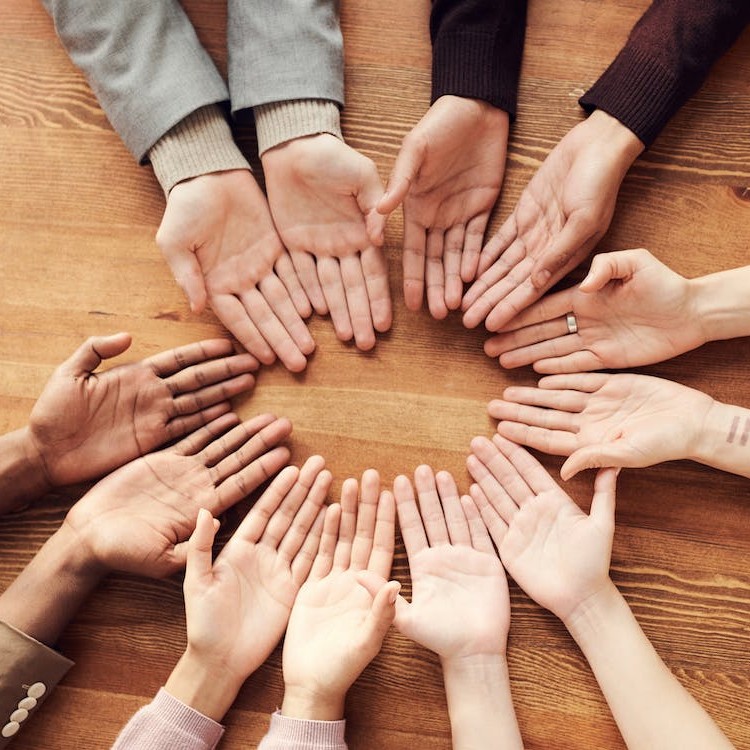Although disasters affect everyone, people who care for others have a unique role to prepare both themselves and the ones they care for. The climate crisis is causing more frequent and extreme weather events which is why it’s more important than ever to be prepared. Prepare now to protect yourself and the people you care for.
Build A Team
Identify individuals and organizations who can support you and the person you care for.
Disasters are challenging, and you can’t be expected to do everything on your own. Plan now by creating a team who can help you in a disaster. Consider including family members, neighbors, friends, colleagues, neighborhood groups, faith-based groups, health care providers, service providers, and social service organizations.
Write down your loved ones needs, routines, and current conditions and share with team members as appropriate.
This will ensure that the team can help each other provide the care your loved one needs when a disaster happens.
Document Your Loved One’s Everyday Needs
Needs
- Mobility limitations
- Physical /cognitive limitations
- Safety concerns
- Transportation needs
- Social interaction, friendship considerations
- Make sure pet or service animal is up to date on vaccinations and have your veterinarian’s contact information.
Routines
- Sleeping schedule
- Wake-up /Bedtime
- Meals and snack routine
- Bathroom routine
- Bathing and Grooming
- Entertainment preferences (conversation, reading, music, tv)
Conditions
- Health conditions and diseases
- Medications (self-administer or need help?)
- Assistive devices (cane, wheelchair, hearing aids, glasses, dentures)
- Identification (date of birth, Social Security number and a current photo)
Healthcare
- Contact info: doctors, dentists, therapists, and home health care providers
- Insurance information
After you have documented your loved one’s needs, plan how to meet them in different disaster scenarios as a team.
- Plan how you will communicate with one another before, during, and after a disaster.
- Involve the people you care for as much as possible.
- Discuss how your loved one’s or your own medical, physical, and cognitive needs may affect your ability to respond.
- Encourage everyone to share ways they can help. Then, assign responsibilities ahead of time for different disaster situations. Depending on the disaster, you may need to shelter where you are or evacuate to stay safe. Make sure to discuss: How will we find out about an emergency?
- Can we stay safely at home without power? Will we need electricity to operate medical equipment, keep medicines cold, or maintain a safe temperature?
- If we need to evacuate, where will we go? How will we get there? Where will we stay? What will we bring? What help do we need to travel?
- Will we have proper food and medication? Can we maintain vital medical care while away?
- How will we care for pets during an evacuation?
- Can we move quickly to an outside meeting place in the event of a home fire? Can we move quickly to a tornado safety spot (basement or interior room on the lowest floor)?
Gather Emergency Supplies
Disasters can lead to power, gas, water, and communications outages. Roads may be blocked. Emergency services may be delayed. Stores and pharmacies may be closed. Gather supplies such as food, water, and medicine for your household before an emergency happens. Organize supplies into a Go-Kit and a Stay-at-Home Kit.
- Go-Kit: at least three days of essential supplies if you need to leave immediately.
- Stay-at-Home Kit: at least two weeks of supplies.
- Talk with your doctors and your loved one’s doctors about how to ensure access to at least a one-month supply of essential medications.
- Make sure to include backup batteries and chargers for devices (cellphone, CPAP, wheelchair, etc.)
- Include supplies for pets such as food, medications, disposal bags, a crate, and a leash.
- Keep personal, financial, and medical records safe and easy to access (hard copies or securely backed up).
Plan to Stay Connected
Some hazards, like tornadoes and flash floods, require you to act immediately to stay safe. Stay informed about any changing conditions and be ready to act fast. Here are some things you can do:
- Sign up for local government emergency alerts. Local governments issue evacuation notices.
- Your community may maintain a list for people with access and functional needs. If available, consider registering.
- Plan to follow weather watches and warnings issued by the National Weather Service.
- Download the Emergency app onto your phone by searching “American Red Cross” in your app store and set up alerts.
- Consider getting an emergency battery-powered radio, so you can stay informed about changing weather.
Plan to Take Care of Each Other
- Understand the dangers you may face after a disaster from extended power outages and during cleanup.
- After a disaster, scammers, identity thieves, and other criminals may take advantage of some people. Work with vetted, trusted sources, and safeguard your personal and financial information.
- It’s normal to have bad feelings, stress, or anxiety after a disaster or other emergency. Remember the team is there to help you. Be sure to check on each other.
- Eat healthy food and get enough sleep to help you deal with stress.
- Know that you can contact the Disaster Distress Helpline for free if you need to talk to someone. Call or text 1-800-985-5990.
Click here to view the full PDF from American Red Cross & AARP
